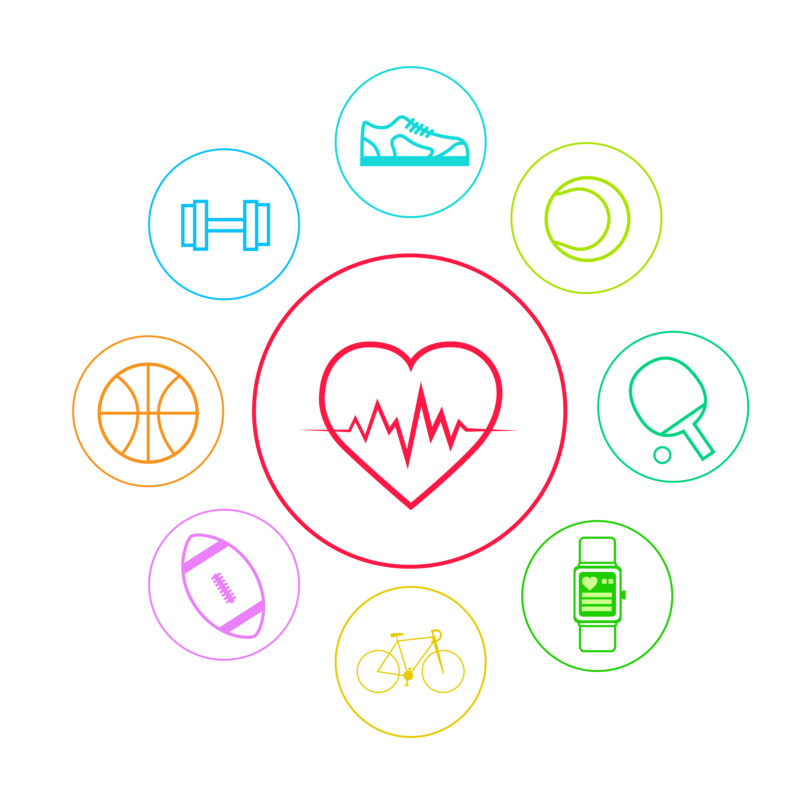Technology surrounds us and has become an inevitable part of our lives. Just like other industries, technology has also had a significant impact on the health and fitness industry. Innovations in the fitness industry have changed the way we workout resulting in substantial transformations. Wearables are increasingly gaining popularity by the day. They are not particularly new, but they have undergone many changes in recent years to help physically inactive persons to become more active. In the past, wearable devices were bulky and ineffective. This is no longer the case. Today’s wearables come in various forms such as smart wristbands, headbands, eyeglasses, etc. You can easily strap them onto your wrist, clip them on your clothes or even rock them like jewelry.
Table of Contents
The Numbers
1 in 6 consumers currently owns and use a wearable device according to Forbes. In 2016 alone, a whopping 118 million units of wearable devices were shipped, and industry experts believe that this trend is not stopping any time soon. Very soon, wearables will overtake smartphones to be best-selling consumer electronics products. Projections show that the wearable device market will quadruple by 2022. Smart wearable sales are projected to exceed 200 million units in 2020.
Understanding Wearables
A wearable is an electronic technology incorporated into items of an accessory and/or clothing which can be comfortably worn on the body. It is designed so as not to obstruct with your body when you are working out. These amazing tiny gadgets are developed considering the ease of application, data security, accuracy and cost. They allow you to access advanced technologies in a portable, easy and hands-free manner. Wearable devices have sensors that monitor a wide range of biometrics (bodily systems and functions) in real time. They collect raw data that is afterward fed to software for analysis. The data is transmitted via wireless networks to cloud storage facilities. The connectivity provided by these devices delivers easily accessible and understandable feedback in both directions.
Seamless Fitness Integration
Companies like Misfit, Fitbit and Garmin are leading the race for fitness trackers. Mostly wrist-worn, these workout companions monitor fitness-related metrics like heartbeat, calories burned and steps taken. These trackers are intended to fit into your life, and not disrupt it. Gyms and smart fitness companies are continually looking for ideas to tap the digital world market to give their businesses the edge over their competitors. They are aware of the fact that clients don’t want to get the feeling like they are making a lifestyle change. To enable this, fitness centers have started integrating wearables to reach potential clients and enhance membership retention. Wearables provide vital data, socialization and gamification aspects.
Just like smartphones have revolutionized how we communicate with the outside world, wearables continue to become more deeply woven into the fitness experience. In today’s market, wearable devices provide sensory and scanning features such as tracking physical activity and scanning. They facilitate communication between a trainer and a trainee. Technology is advancing at a fast pace, and developers and engineers continue to find new and exciting software and hardware innovations that will change how wearables look, feel and work. It is safe to say that there’s no limit to the potential uses of wearable devices.
5 Ways Wearables Are Changing the Future of Fitness
-
Wearables Engage Gym Members for Better User Experience
Fitness centers that integrate wearables into personal training sessions and group classes have a better retention rate. By using the social platforms associated with wearables to connect gym members, the gym will start feeling like a social space for members and gym-goers can start feeling like a family instead of just training partners. The info from these devices is vital when looking to send training tips, class reminders and push notifications.
-
Data Sourced from Wearables Enhance Member Lifetime Value
Gone are the days when gyms used to rely on traditional physical records to keep track of their customers’ progress. Thanks to wearables, gyms can take advantage of the valuable data generated by the devices to extract value from members. Breaking down the data will help gyms to learn customer behavior and act accordingly. If, for instance, you pinpoint a member that is likely to quit, you can devise ways to keep them engaged. Engagement can be anything from a simple consultation to a free personal training session.
-
Gamification Brings The Fun To Workouts
Workouts don’t need to be boring, and thanks to wearable fitness trackers, they are not. You can sync up your device with your fitness center’s ecosystem to enable gamification. What this basically means is that any gym activity, be it weight lifting or group exercise, will turn into a game. You will be offered personalized points or rewards for every successful milestone. This will engage gym-goers and motivate them to do better and be better. When your goals seem far-fetched, you will get the required motivation to reach for them.
-
Enhancing Personal Training And Paid Programming
It is easy to overrate your daily level of physical fitness. Wearable devices can be linked with apps that can monitors members’ diets and activities outside the gym over time. Every wearable has a mobile app to go along with. Such apps can help you keep your client on track by ensuring he or she sticks to the training program. Besides tracking, wearables also provide feedback and helpful insights. Depending on the client’s progress, you can make meaningful changes by offering the appropriate support and guidance. In the next few years, every fitness club will have its own app, just like every business now has its own website.
-
Social Amplification By Wearables Is Vital To The Younger Generation
We live in an internet era and social media rules the world. Almost everyone is on Facebook, Instagram and Twitter. Wearable devices bring out the social feature in a gym, enabling members to connect easily. By making exercises social, gym-goers are more likely to enjoy the experience of training in the gym and sticking to their unique personal fitness goals.
Conclusion
Overall, fitness is headed towards smart wearable tech and the cutting-edge tech currently available has set the pace for a more personalized fitness planning. The wearable market is in a constant state of change. While most common devices are worn on the wrist, evolving wearable designs means that smart technology will be incorporated into other gears such as running clothes and shoes. These advancements have made the future of fitness bright and exciting to look forward to.
Think of wearables as a New Year’s resolution and acquire one today!
No products found.





